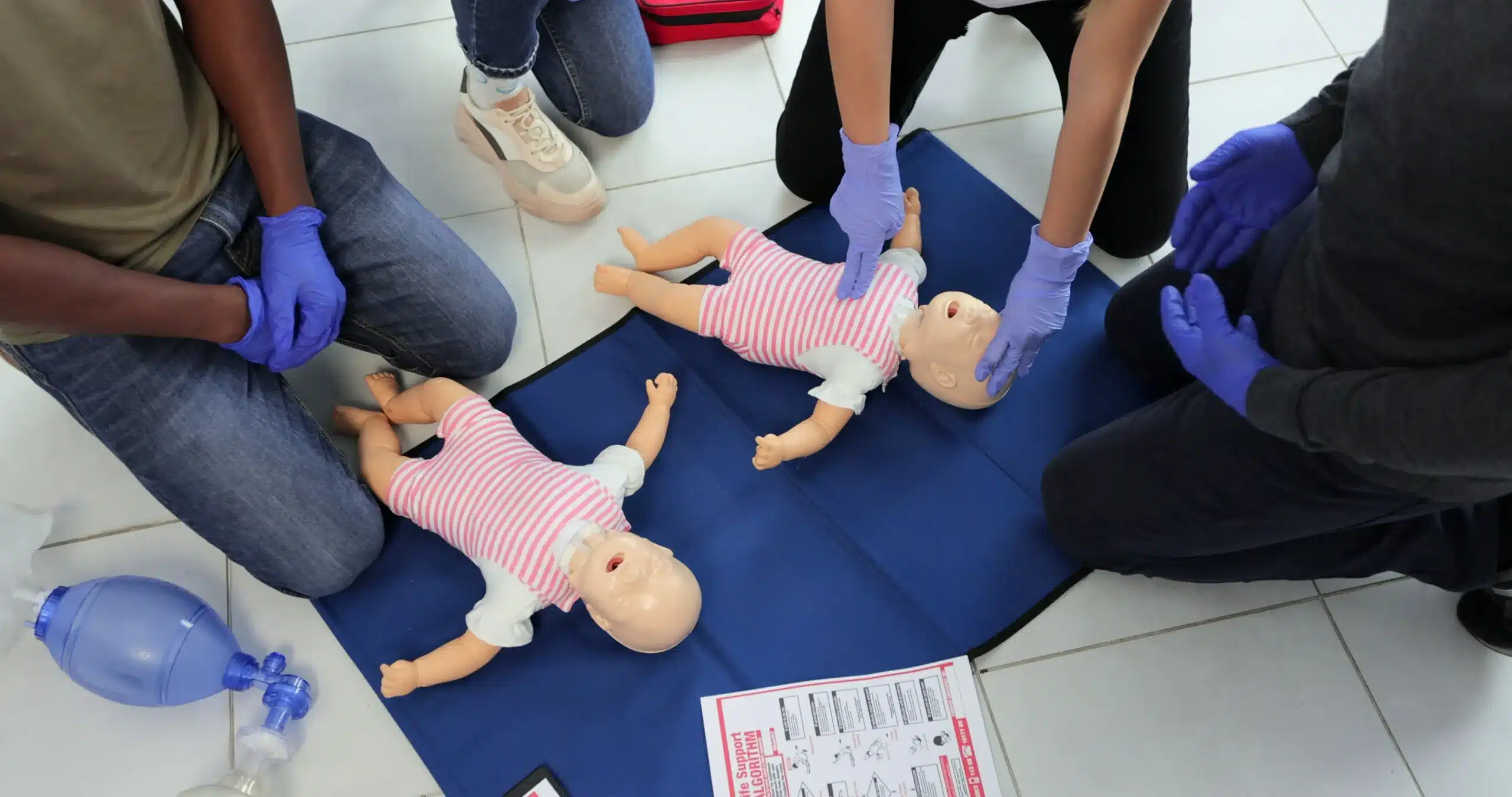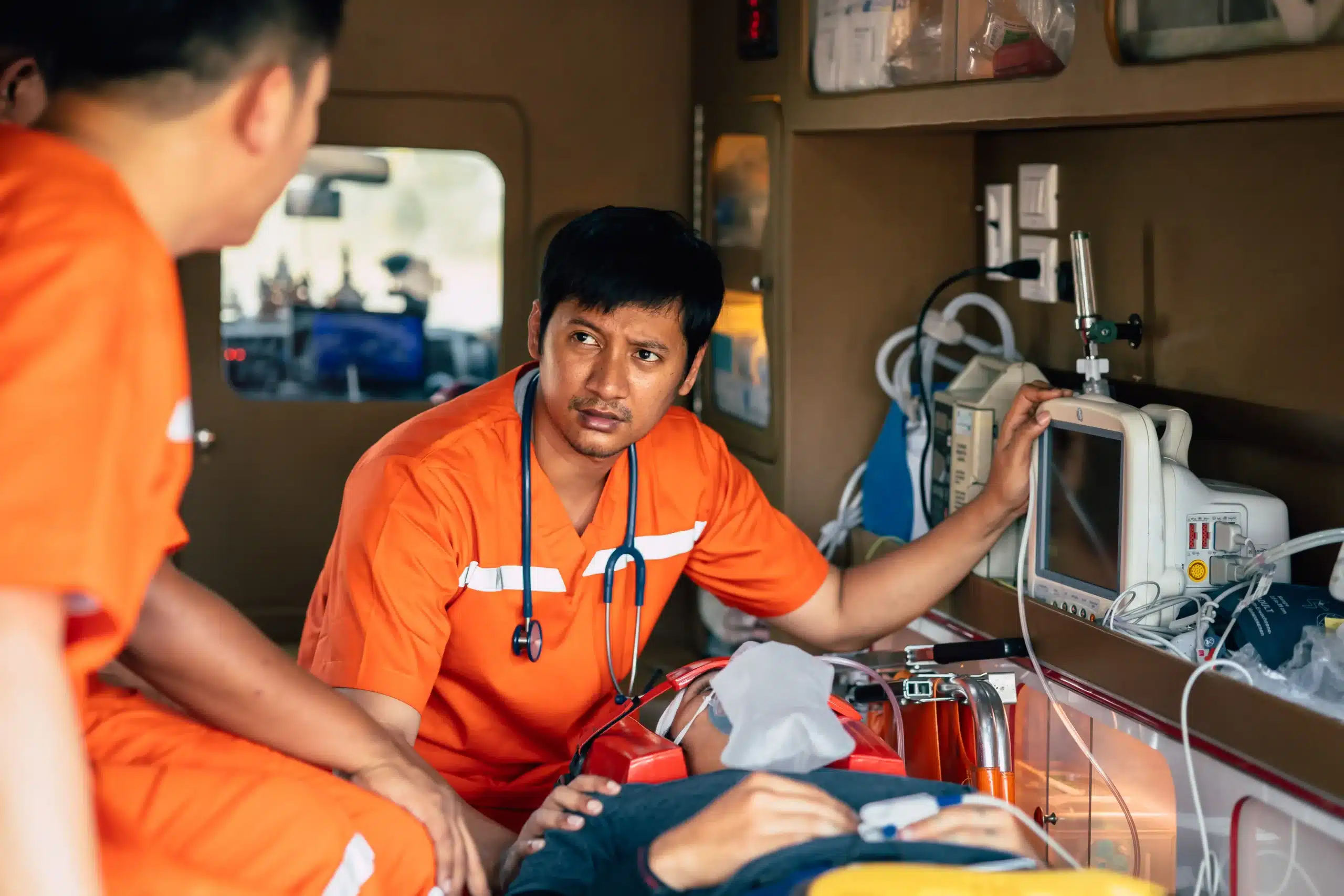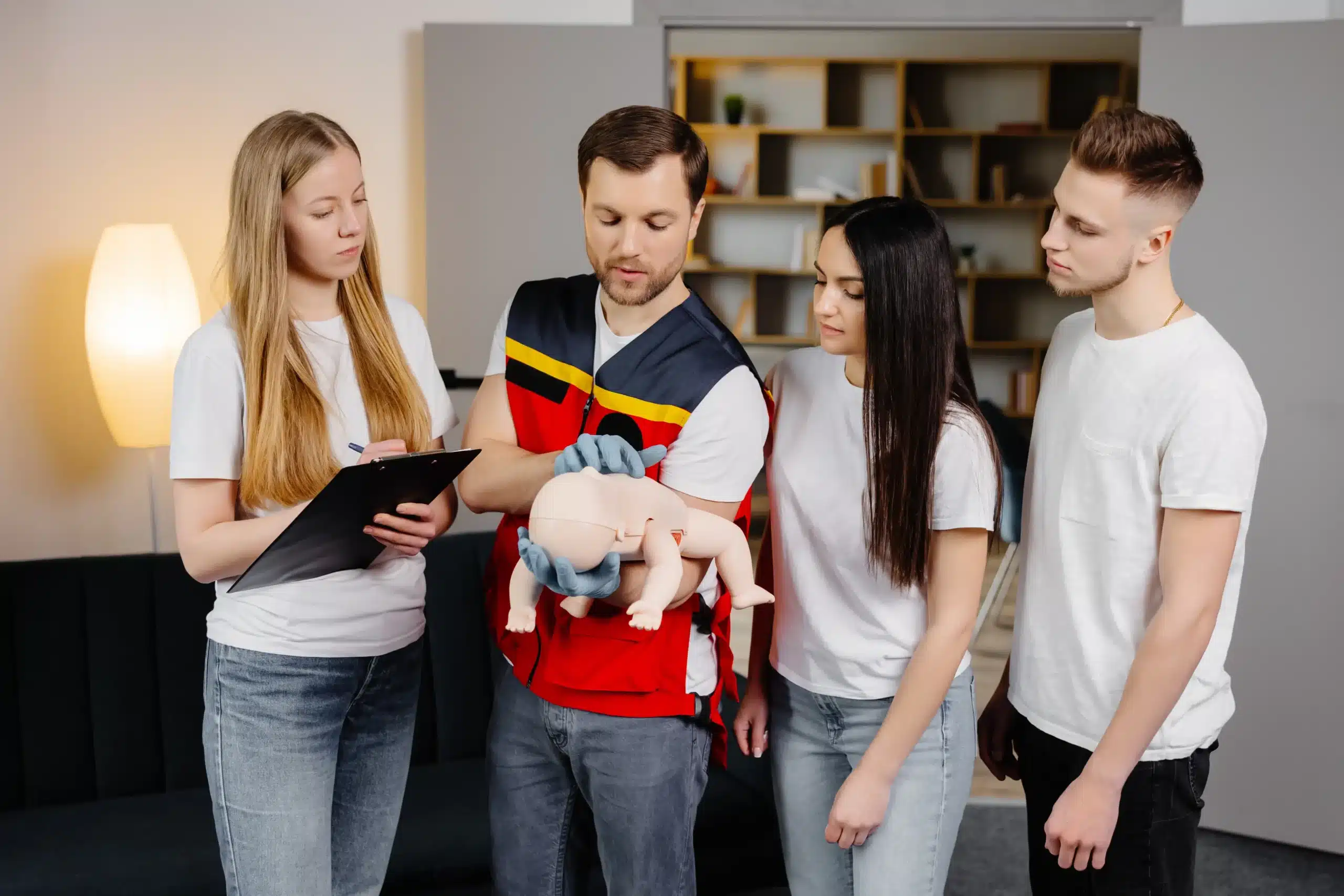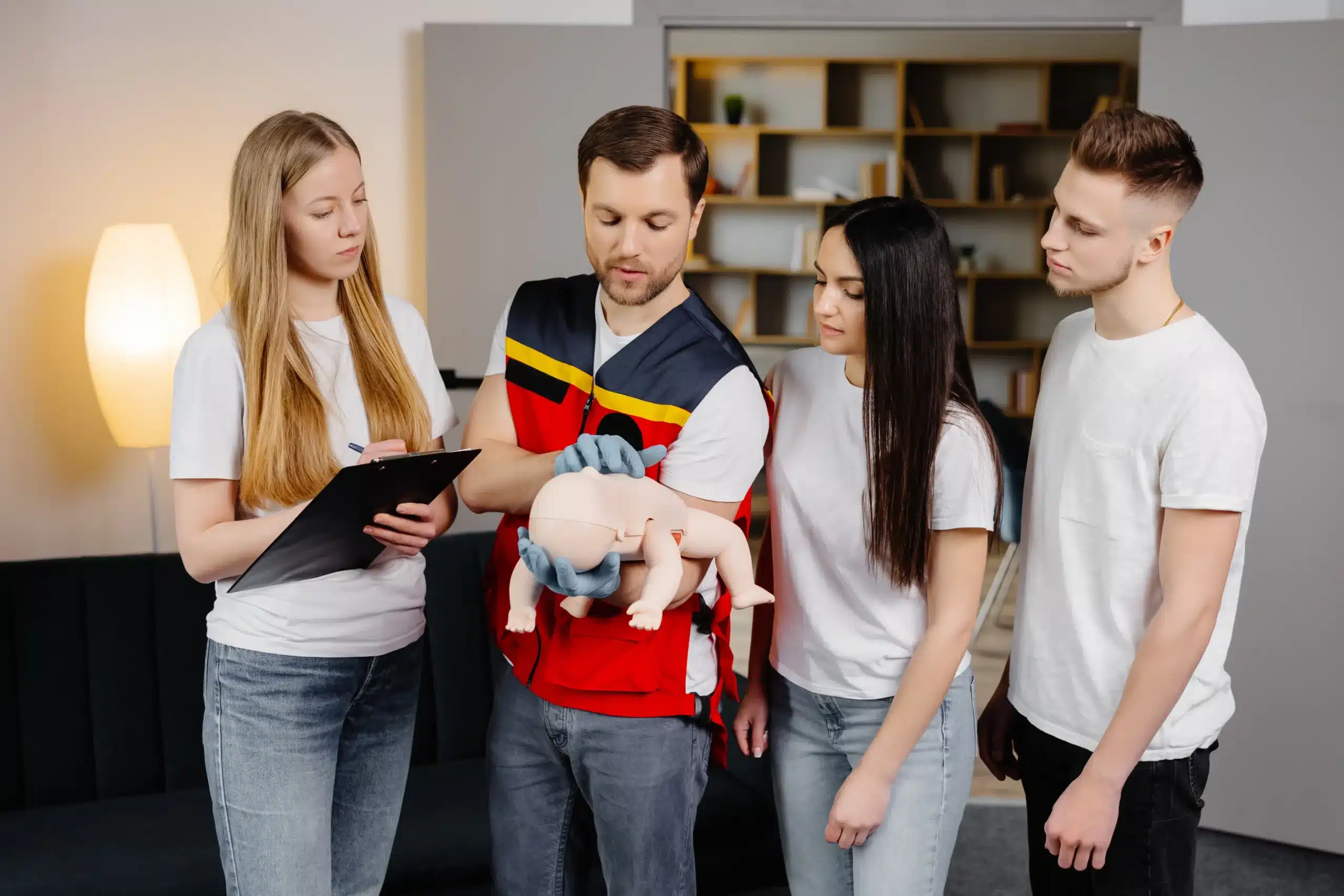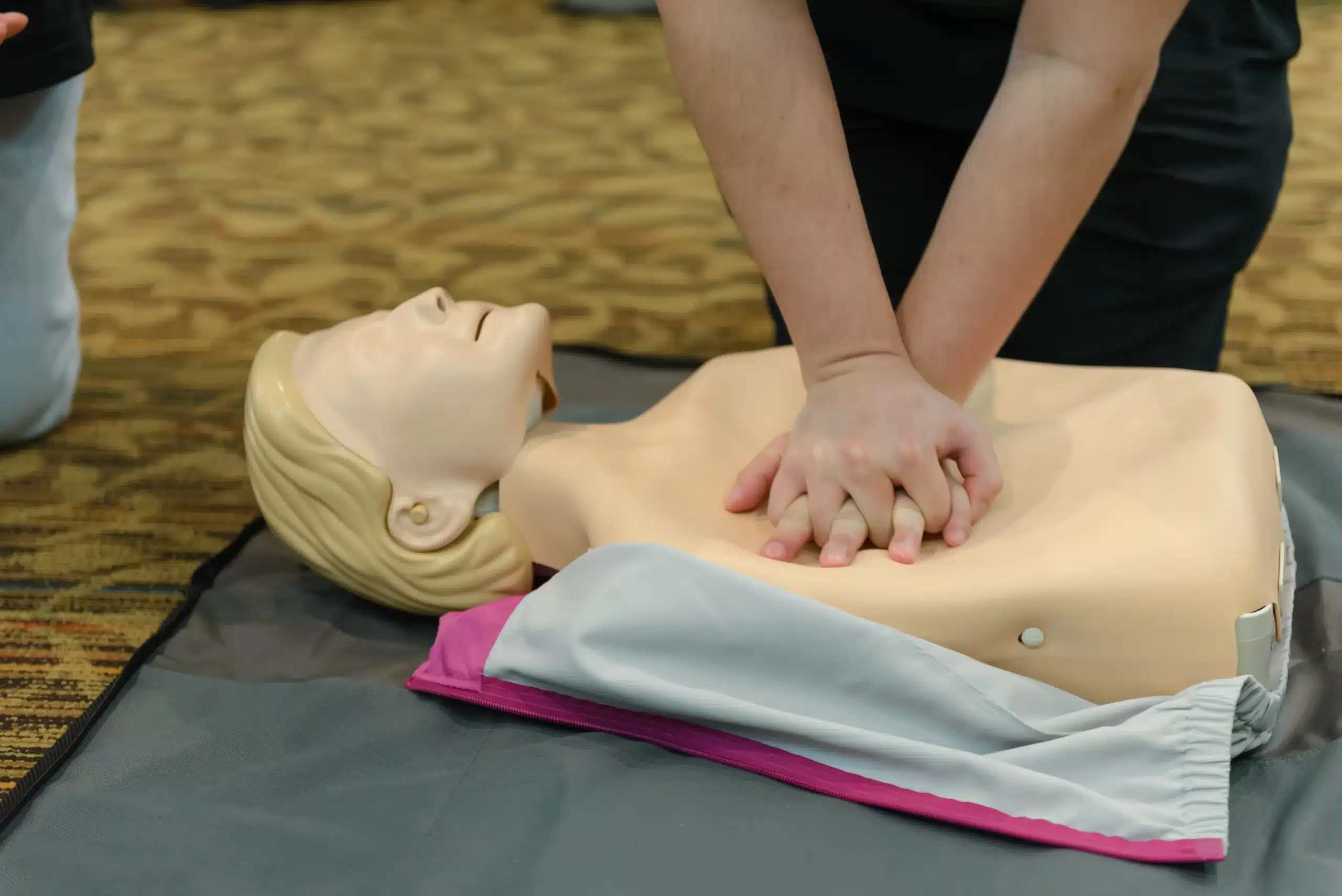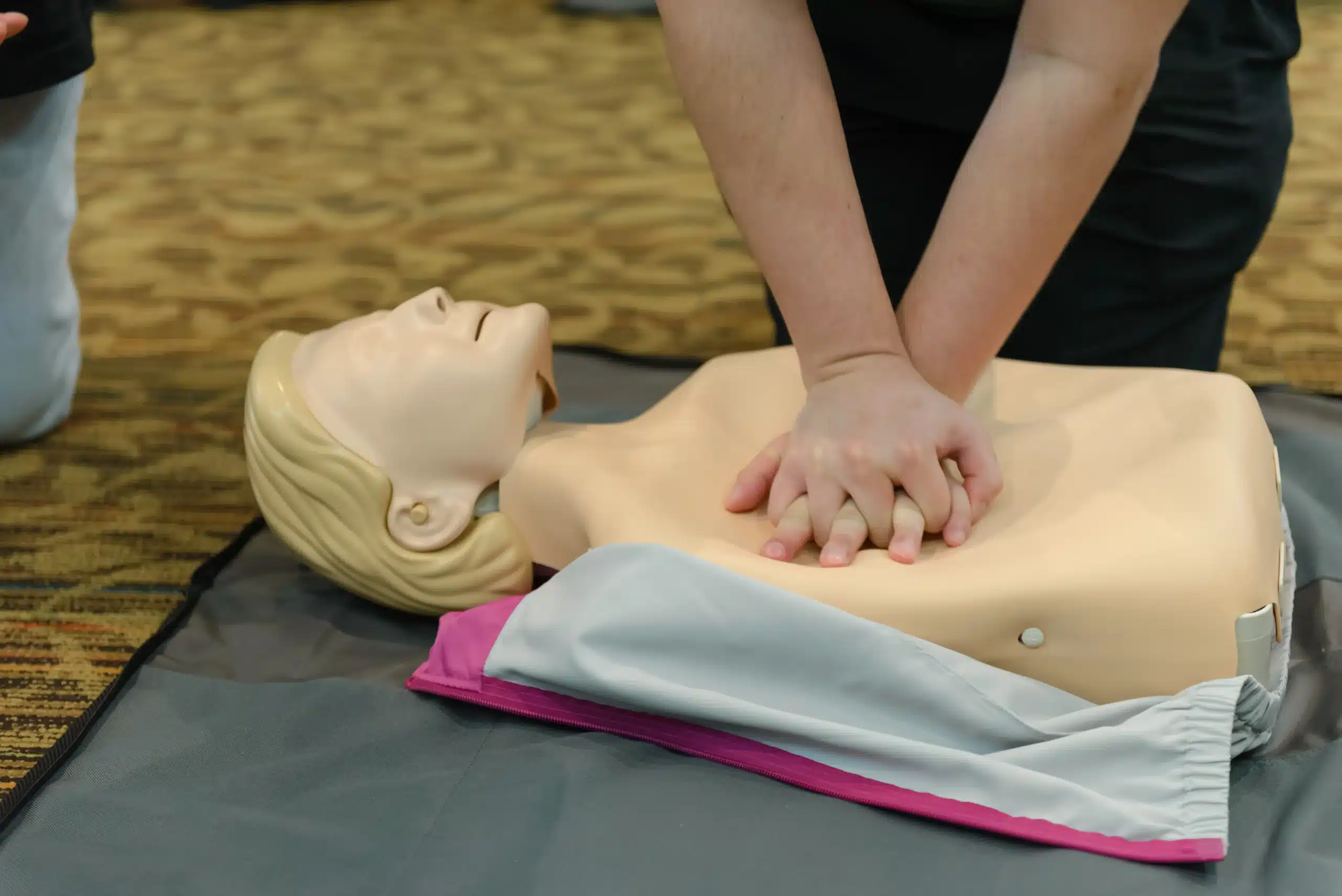Life can throw curveballs, and being equipped to handle medical emergencies is a powerful skill to have. Whether you’re a healthcare professional, a childcare provider, or just someone who wants to be prepared, staying current with your CPR and first aid training is essential. CPR First Aid recertification in San Francisco offers a convenient way to refresh your knowledge and skills, ensuring you’re ready to respond effectively in a crisis. This guide explores the ins and outs of recertification, from understanding its importance to finding the right training program in San Francisco that fits your needs and budget. We’ll also cover common misconceptions about CPR and first aid, empowering you to act confidently and potentially save a life.
Key Takeaways
- Regular CPR and first aid recertification keeps your lifesaving skills sharp. Find a convenient course format—online, in-person, or blended—to refresh your knowledge and maintain your confidence in emergencies.
- The right recertification program meets your specific needs and professional goals. Consider certification validity, training quality, cost, and ongoing learning resources when choosing a program.
- Continuous practice and learning are essential for effective emergency response. Regularly review your skills and seek out refresher courses to stay up-to-date on the latest guidelines and techniques.
What is CPR First Aid Recertification?
CPR and first aid skills are essential for responding to emergencies. But these skills can fade over time. That’s where recertification comes in. It’s a refresher course that keeps your knowledge and abilities sharp, ensuring you’re prepared to act quickly and effectively in a crisis. Whether you’re a healthcare professional, a childcare provider, or simply someone who wants to be prepared, understanding CPR first aid recertification is crucial.
What is Recertification and Why Does it Matter?
Recertification is like a tune-up for your lifesaving skills. It’s how you renew your CPR and first aid certification to keep your training current. The Red Cross offers CPR renewal courses that are shorter than initial training, making it easier to fit into your busy schedule. This is important because studies show CPR skills can get rusty quickly, with less than half of people able to pass a skills test a year after their initial training. Regular recertification ensures you retain the confidence and competence to handle emergencies. At Safety Training Seminars, we offer various CPR and first aid recertification courses designed to meet your specific needs.
How Often Do Professionals Need Recertification?
Most CPR certifications expire after two years. Staying up-to-date with the latest techniques and guidelines is essential, especially for professionals. Renewal courses are available if your certification is about to expire or has already lapsed. This way, you maintain your qualifications and continue providing effective emergency care. Check our course calendar to find a recertification class that works for you. We offer classes daily at over 60 offices in Northern California, making it convenient to renew your certification.
Top CPR First Aid Recertification Providers in San Francisco
Finding the right CPR and first aid recertification provider is crucial for staying up-to-date on life-saving techniques. Here’s a rundown of reputable options in San Francisco:
Safety Training Seminars
Safety Training Seminars, a woman-owned AHA Training Center, offers high-quality American Heart Association (AHA) courses, including BLS, ACLS, PALS, CPR, and First Aid. They’re known for competitive pricing on these essential training classes in the San Francisco Bay Area, backed by a low price guarantee. Their convenient San Francisco location serves residents of nearby cities like Daly City, San Mateo, and Oakland. You can find their course schedule and register on their website.
American Red Cross
The American Red Cross offers CPR and First Aid classes in San Francisco and throughout California. These classes, taught by trained instructors, equip students with the skills and confidence to handle emergencies. They offer various courses for different needs and experience levels.
American Heart Association
While the American Heart Association (AHA) doesn’t directly teach classes, they establish the standards for CPR and ECC guidelines. AHA courses are ideal for healthcare professionals, emergency responders, and anyone needing advanced medical training. You’ll find AHA-certified courses at various training centers, including Safety Training Seminars.
San Francisco Fire Department
The San Francisco Fire Department offers CPR and First Aid training through community outreach and safety programs. Visit their website for details on scheduled courses and community events.
CPR Education
CPR Education provides various CPR and First Aid courses, including recertification options, for individuals and organizations. They offer flexible scheduling and multiple locations.
Revive CPR
Revive CPR in San Francisco offers AHA-certified CPR, BLS, and First Aid classes. They emphasize in-person instruction with instructors and manikins, focusing on practical, hands-on training.
Recertification Process Explained
CPR and first aid recertification courses refresh your essential lifesaving skills and knowledge. They typically cover core concepts, techniques, and updates to best practices. Let’s break down what you can expect.
Course Content and Skills Covered
Recertification courses cover core skills like adult, child, and infant CPR, along with AED use and first aid basics. You’ll review how to recognize the signs of a medical emergency, including cardiac arrest, stroke, and choking. The curriculum also emphasizes effective communication with emergency responders and other bystanders. Some courses, like those offered by the Red Cross, also include training on infant and child care, preparing you for a range of situations.
Hands-on Practice and Assessment
Hands-on practice is crucial for recertification. You’ll work with instructors and training manikins to practice chest compressions, rescue breaths, and other essential techniques. This practical experience helps reinforce your skills and build confidence in responding to emergencies. Most programs, including those offered by Revive CPR, incorporate a skills test to ensure you can apply what you’ve learned.
Time Requirements and Duration
Recertification courses are generally shorter than initial certification courses, often lasting just a few hours. This makes it easier to fit recertification into your schedule. For example, some blended learning courses, like those from Revive CPR, combine online learning with a shorter, 50-minute in-person skills session. The condensed format helps you efficiently update your skills without a major time commitment. The Red Cross website offers more information on CPR class duration and scheduling.
Costs and Affordable Options
CPR recertification is an investment in your skills and the safety of others. Understanding associated costs and exploring available options will help you find a course that fits your budget.
Average Recertification Course Prices
In San Francisco, CPR recertification typically costs between $70 and $150. This range reflects standard pricing for programs from established organizations like the American Red Cross and the American Heart Association. Prices can vary based on the specific course and any bundled certifications. Check directly with training providers for their most up-to-date pricing. My CPR Certification Online offers a helpful overview of CPR course costs.
Group Discounts and Package Deals
If you’re training with a group, look for discounts. Many providers offer significant price reductions—sometimes up to 30%—for group registrations. This can be a great way to save money, especially for workplaces training multiple employees. Some organizations also offer on-site training, which can be a convenient and cost-effective option.
Free and Low-Cost Training Opportunities
While fully certified free CPR courses are rare in the Bay Area, keep an eye out for community events. Organizations like the American Red Cross and the American Heart Association occasionally host free training sessions, though these may not always include official certification. For low-cost options, check with local community centers or health organizations. Resources like CPR Edu can help you find free CPR classes in San Francisco.
Safety Training Seminars’ Low Price Guarantee
At Safety Training Seminars, we’re committed to providing affordable, high-quality training. We offer competitive prices on BLS, ACLS, PALS, CPR, and First Aid classes in the San Francisco Bay Area. Our low price guarantee ensures you’re getting the best rates for American Heart Association BLS CPR classes. Explore our BLS, ACLS, and PALS course schedules to find a class that works for you. We also offer an RQI program for healthcare professionals seeking a flexible resuscitation quality improvement solution.
Compare Certification Programs
American Heart Association vs. American Red Cross
Both the American Red Cross (ARC) and the American Heart Association (AHA) offer various CPR and first aid certification courses for different skill levels, from community members to healthcare providers. While both are valuable, there are key differences. AHA courses are often seen as more in-depth, emphasizing advanced medical techniques alongside basic life support. This makes AHA certification often preferred, and sometimes required, for healthcare professionals. The ARC offers a broader range of courses, including various levels of first aid, CPR, and AED training, suitable for a wider audience. Safety Training Seminars offers a range of AHA courses to meet your needs.
Credential Recognition and Validity
Many employers accept Red Cross certification, particularly for roles requiring basic CPR knowledge. However, always check with your employer or professional field for specific requirements. While both organizations are respected, the acceptance of their CPR certifications can vary. AHA certification is often essential for certain healthcare roles.
Choose the Right Program
The best choice between AHA and Red Cross certification depends on your individual needs. Consider your profession, employer requirements, and desired training depth. Both offer excellent, life-saving courses. If you’re unsure which is right for you, contact Safety Training Seminars for guidance. We can help you understand each program and choose the best fit. Explore our low price guarantee for more information on our commitment to affordable training.
Online vs. In-Person Recertification
Deciding how to renew your CPR certification often comes down to choosing between online and in-person training. Both are valid options, especially for busy professionals in San Francisco juggling demanding schedules. Let’s break down the pros and cons of each, along with the increasingly popular blended learning approach.
Pros and Cons of Each Option
Online recertification offers unparalleled flexibility. You can learn at your own pace, fitting the coursework around your schedule and avoiding commutes across San Francisco, Daly City, San Mateo, or Oakland. It’s often more affordable, too. However, online courses may not provide the same level of hands-on practice as in-person training. While the learning process is comparable to face-to-face instruction, some employers or organizations may still require in-person skills verification. Always double-check the requirements for your specific situation. If you need American Heart Association certification, make sure the online program you choose meets those standards.
In-person classes provide crucial hands-on experience, allowing you to practice techniques and receive immediate feedback from certified instructors. This direct interaction can build confidence and address specific questions in real time. The downside? In-person training requires a greater time commitment, including travel to the training location and fixed class schedules. This can be challenging for those with less flexible schedules.
Blended Learning Approaches
Blended learning offers a happy medium, combining online learning with a shorter, in-person skills session. You’ll complete the cognitive portion of the course online, then attend an in-person session focused on hands-on skills practice and assessment. This approach significantly reduces overall class time while still providing essential practical training. Safety Training Seminars offers this blended learning format for BLS certification, making it a convenient option for busy professionals throughout Northern California.
Technology Integration in Training
Technology plays an increasingly important role in CPR recertification. Digital certificates offer easy access and streamlined verification for employers. Plus, mobile apps, like the one from the American Red Cross, provide valuable resources and reminders to help you stay up-to-date between courses. These digital tools enhance the learning experience and make maintaining your certification more convenient.
Key Recertification Skills
Your CPR and first aid recertification course will cover essential skills to prepare you for real-life emergencies. These courses aren’t just about checking a box; they’re about ensuring you’re ready to act quickly and confidently when it matters most. Here’s a look at some key skills you’ll refine during your recertification:
High-quality Chest Compressions
High-quality chest compressions are the cornerstone of effective CPR. You’ll review the latest guidelines from the American Heart Association (AHA), focusing on delivering compressions at the correct rate (100 to 120 compressions per minute) and depth (at least 2 inches). Compression-only CPR is often the most effective approach for adults experiencing cardiac arrest, emphasizing the importance of consistent, high-quality compressions. Your recertification course will provide opportunities to practice and receive feedback on your technique.
Proper AED Use
Automated External Defibrillators (AEDs) can significantly increase the chances of survival during cardiac arrest. Recertification training reinforces proper AED use, from quickly assessing the situation to correctly placing the pads and following the device’s prompts. The courses offered by Safety Training Seminars include comprehensive training on AED operation, ensuring you’re comfortable and proficient with this life-saving technology.
Recognize Emergency Signs
Recognizing the signs of a medical emergency is the first step towards providing effective aid. Your recertification will cover how to quickly identify various emergency situations, from cardiac arrest and stroke to severe bleeding and choking. Learning to recognize these signs equips you with the knowledge to assess the scene, prioritize actions, and provide appropriate initial care.
Effective Emergency Response Communication
Clear and effective communication is crucial during an emergency. You’ll learn how to communicate with 911 dispatchers, other bystanders, and medical professionals arriving on the scene. Recertification training also addresses common misconceptions about CPR that can hinder effective communication and delay essential care. By practicing these communication skills, you’ll be better prepared to manage the stress of an emergency and ensure the right information gets to the right people.
Common CPR and First Aid Misconceptions
It’s easy to fall prey to misconceptions about CPR and first aid, especially if your certification has lapsed. Let’s clear up some common misunderstandings.
Online vs. In-Person Training Effectiveness
While convenient, online CPR training doesn’t fully replace the benefits of in-person classes. Online courses offer valuable knowledge, but mastering CPR requires hands-on practice with a qualified instructor. In-person training provides real-time feedback and the chance to perfect your technique on a manikin, building the muscle memory and confidence you need in a real emergency.
Who Needs CPR Training?
CPR training isn’t just for healthcare professionals—it’s a vital skill for everyone. Emergencies can happen anytime, anywhere, and bystanders often play a crucial role before first responders arrive. Equipping yourself with CPR and first aid skills empowers you to potentially save a life. From parents and teachers to office workers and construction crews, broader CPR training creates safer communities. CPR certification is an asset for anyone looking to enhance their preparedness and contribute to a more resilient community.
Mouth-to-Mouth Necessity
Many hesitate to perform CPR due to the perceived requirement of mouth-to-mouth resuscitation. However, current American Heart Association guidelines prioritize chest compressions. Compression-only CPR is often sufficient and can significantly improve survival rates. While rescue breaths are still part of some protocols, the emphasis on continuous compressions makes it easier for anyone to provide immediate assistance. This updated guidance removes a significant barrier for those hesitant to perform CPR.
Risks of Performing CPR
Some worry about causing harm while performing CPR. It’s natural to feel apprehensive, but the risks of inaction are far greater. Proper training teaches you the correct techniques, minimizing the potential for injury. Remember, any attempt to provide CPR is better than none when someone’s life is on the line. Learning CPR empowers you to act quickly and confidently in a crisis.
Maintain Your CPR First Aid Skills
It’s easy to let your CPR skills get rusty. Regular practice is key to ensuring you’re prepared for a real-life emergency. Even seasoned professionals benefit from brushing up on their training. Here’s how to stay sharp:
Practice Techniques Between Certifications
Don’t wait until your recertification is due to review the techniques. Set aside time every few months to practice chest compressions, rescue breaths, and AED use. You can practice on a CPR manikin or even a pillow. The more familiar you are with the steps, the more confident you’ll feel in a real emergency.
Free Online Refresher Courses
Take advantage of free online refresher courses to keep your skills current. These courses are a convenient way to review key concepts and stay up-to-date on any changes in CPR guidelines. Even a quick refresher every few months can make a big difference.
The Importance of Continuous Learning
CPR and first aid guidelines can change, and research consistently shows that skills retention drops significantly within a year of initial training. Committing to continuous learning ensures you’re always prepared to provide the most effective care. Regular practice and refresher courses are small investments that can have a huge impact when it matters most. This ongoing learning helps debunk common misconceptions about CPR and first aid, encouraging more people to undertake training and be prepared for emergencies.
Choose the Right Recertification Option
So, you’re ready to recertify your CPR and First Aid skills—fantastic! Choosing the right recertification course isn’t just about checking a box; it’s about making sure you have the most up-to-date knowledge and confidence to handle emergencies. This section will walk you through key factors to consider so you can make the best decision for your needs.
Factors to Consider
First things first, think about what you need from your recertification. A few key things to keep in mind:
- Certification Validity: CPR and First Aid certifications typically expire after two years. Make sure the course you choose provides a valid certification recognized by your employer or governing body. Staying current with your certification demonstrates your commitment to preparedness.
- Training Quality: Look for courses taught by experienced, certified instructors. High-quality training ensures you learn the latest techniques and best practices. Organizations like the American Red Cross offer classes in San Francisco taught by trained professionals, giving students the skills and confidence to act in emergencies.
- Ongoing Training: Recertification is a great starting point, but maintaining your skills requires ongoing practice. Consider programs that offer refresher materials or resources for continued learning between certifications. The Red Cross, for example, emphasizes the importance of ongoing training and provides resources to help students retain their knowledge.
Make an Informed Decision
Now that you know what to look for, let’s explore how to make an informed decision. Here’s a breakdown to help you compare different programs:
- Certification Acceptance: While many employers accept certifications from various organizations, some may have specific requirements. For instance, some roles might require an American Heart Association (AHA) certification, while others may accept Red Cross certification. Check with your employer to confirm their requirements. For more information, check out this comparison of AHA and Red Cross certifications.
- Program Differences: Different programs may emphasize different aspects of CPR and First Aid. The AHA, for example, often focuses on advanced medical techniques alongside essential life support. Consider your specific needs and choose a program that aligns with your goals. This resource further explores the differences between AHA and Red Cross training.
- Cost Considerations: Recertification courses come at various price points. Research different providers and compare costs, keeping in mind that investing in quality training is an investment in your ability to save lives. Don’t forget to explore potential discounts or package deals that might be available. Check out Safety Training Seminars for an affordable option in San Francisco.
Related Articles
- CPR Certification Near Me: Find the Right Class Today – San Francisco CPR Classes
- CPR Training in San Francisco: A Complete Guide – San Francisco CPR Classes
- First-Aid Training in SF: Your Complete Guide – San Francisco CPR Classes
- CPR Renewal in SF: Your Complete Guide – San Francisco CPR Classes
- Online CPR Classes in SF: Your Certification Guide – San Francisco CPR Classes
Frequently Asked Questions
How often do I need to renew my CPR and first aid certification? CPR and first aid certifications are typically valid for two years. It’s essential to renew your certification before it expires to maintain your skills and credentials.
What’s the difference between CPR and first aid recertification and initial certification? Recertification courses are designed to refresh existing skills and knowledge, so they’re generally shorter than initial certification courses. They cover core concepts, techniques, and updates to best practices. Initial certification courses provide a comprehensive introduction to CPR and first aid for those new to these life-saving skills.
What’s the best way to choose a CPR and first aid recertification provider? Consider factors like the provider’s reputation, instructor qualifications, course content, cost, and schedule flexibility. Look for providers who offer the type of certification you need (AHA or Red Cross) and ensure the certification is recognized by your employer or professional organization.
Are online recertification courses as effective as in-person classes? Online courses offer flexibility and convenience, but they may not provide the same level of hands-on practice as in-person training. Some employers or organizations may require in-person skills verification, even if you complete an online course. Blended learning, which combines online learning with an in-person skills session, offers a balance of convenience and practical training.
How can I stay up-to-date on CPR and first aid best practices between recertifications? Practice your skills regularly, even without a manikin. Take advantage of free online refresher courses and resources like mobile apps to reinforce your knowledge and stay informed about any changes in guidelines. Consider subscribing to newsletters or following reputable organizations like the American Red Cross or the American Heart Association for updates.


